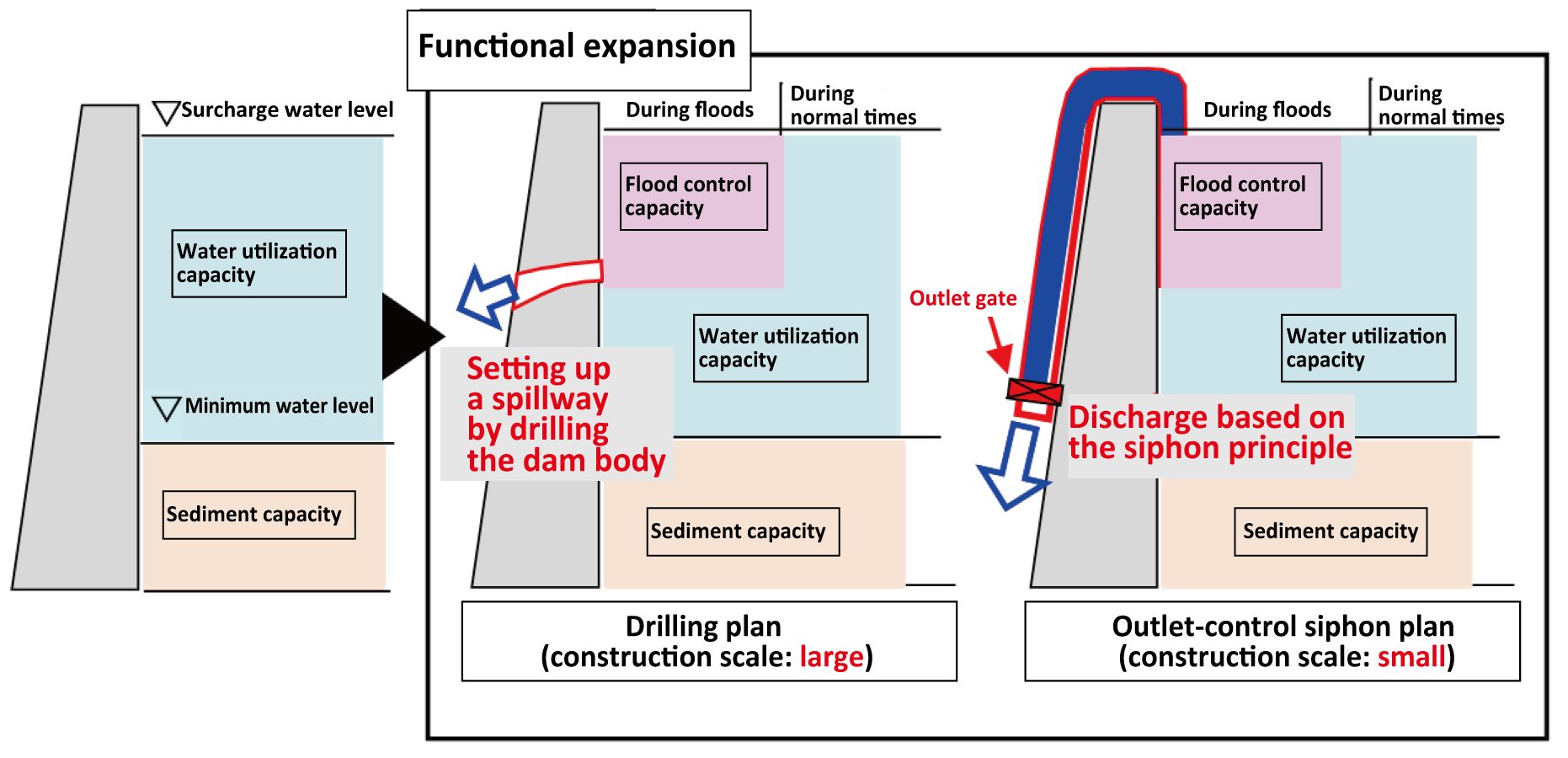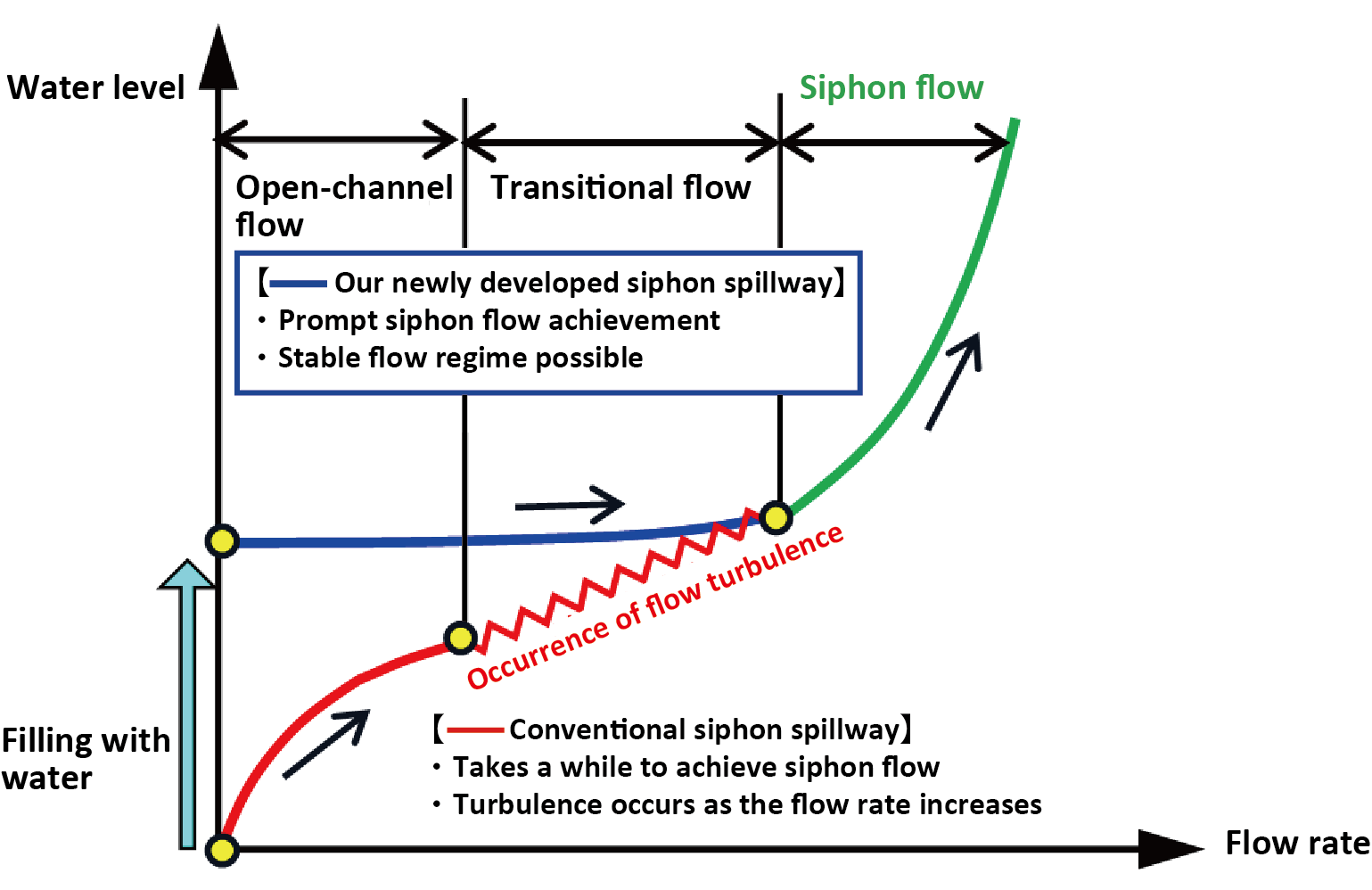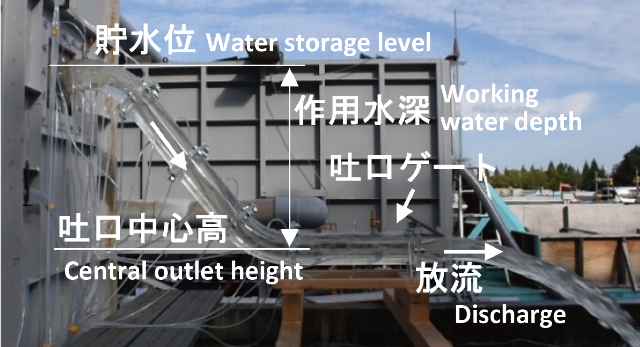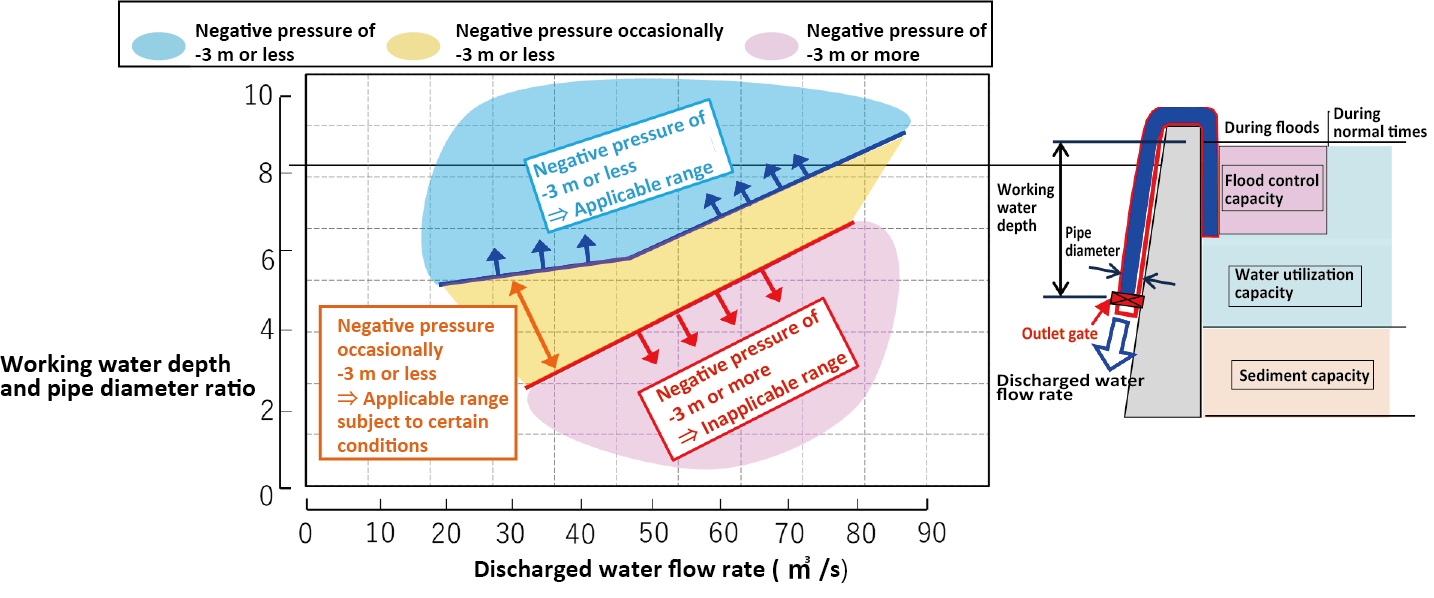2023.09.11
CTI Engineering Co., Ltd. has jointly developed a new type of siphon spillway that can effectively function with a wider range of water storage levels than past options at a low cost.
Technology & Research
We have jointly developed an outlet-control siphon spillway with Japan Dam Engineering Center and HOKOKU KOGYO (patent pending: dam spillway equipment (application number: 2019-209304)). Unlike past siphon spillways, which were limited to small-scale flow rates (water utilization), our new siphon spillway can be applied to large-scale flow rates (flood control utilization).
1. Background
Due to increasingly extreme climate change and flooding in recent years, there is an increasing need to enhance the flood control functions of dams. However, the addition of spillways and similar dam redevelopment construction projects (dam body drilling, tunnel spillways, etc.) have large construction costs and affect dam operations. Therefore, finding a way to inexpensively and efficiently improve the flood-control discharge capabilities of dams without any need for large-scale renovation of the dams themselves has been an issue.
2. Overview of the developed technology (siphon spillway)
We have developed outlet-control siphon spillway technology that utilizes the theory of siphons, which are systems in which the difference in water pressure (gravity) between two ends of a pipe is used to cause water to flow within the pipe. The technical features of this outlet-control siphon spillway are shown below. (See Figure 1 and Figure 2.)
- For our technology, we utilize a conventional siphon spillway--which is limited to small-scale flow rates typical of water-utilization spillways due to a turbulent flow regime and other hydraulic issues--and install a gate at its outlet (an outlet gate).
- By filling the pipe with water in advance, we can promptly achieve siphon flows and a stable flow regime, thereby enabling application to flood-control spillways with large-scale flow rates.

Figure 1. Dam body drilling plan versus our siphon spillway plan

Figure 2. Siphon-spillway discharge characteristics
For this technology--due to the existence of complex hydraulic events--we conducted a hydraulic model experiment (see Figure 3) focused on air entrainment, a factor that causes a turbulent flow regime, and negative pressure areas, a factor that causes vibrations, to clarify the conditions under which safe discharge (negative pressure of -3 m or less) is possible. (See Figure 4.)

Figure 3. Hydraulic model experiment

Figure 4. Confirming the applicable scope via our hydraulic model experiment
3. Future prospects
We will consider the results of this research to prepare guidelines for considering outlet-control siphon spillways by around fiscal 2024.